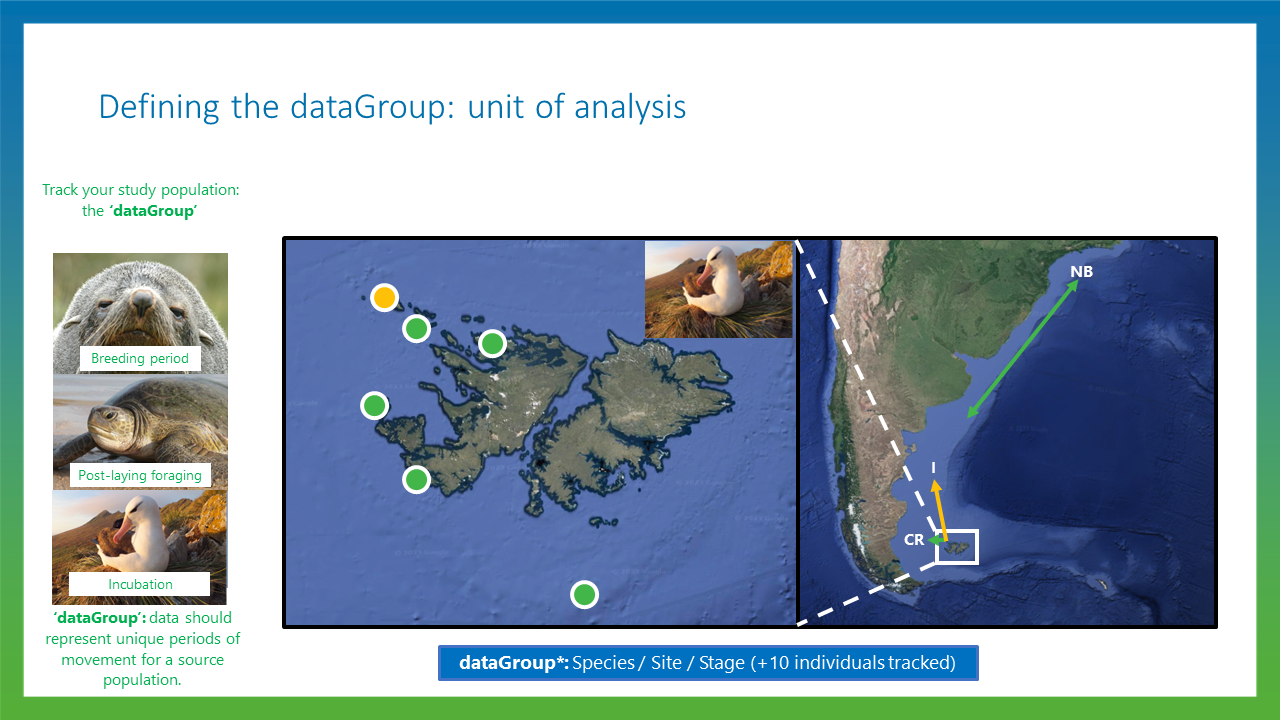15 Data needs: dataGroup (unit of analysis)
The movement patterns and spatial distributions of highly mobile species often change across seasons.
Protocols in the toolkit are designed to typically identify important sites for a source population during a specific seasonal life-cycle stage. It is important that input data represents periods in which the animals in the source population are moving or distributed in a similar manner to one another.
Further details regarding the dataGroup are also explained under the relevant analytical sections.
15.1 Example dataGroup for analysing tracking data to identify an important site
First, we want to consider data that represents the unique period of movements from a source population; this is what we refer to as the dataGroup.
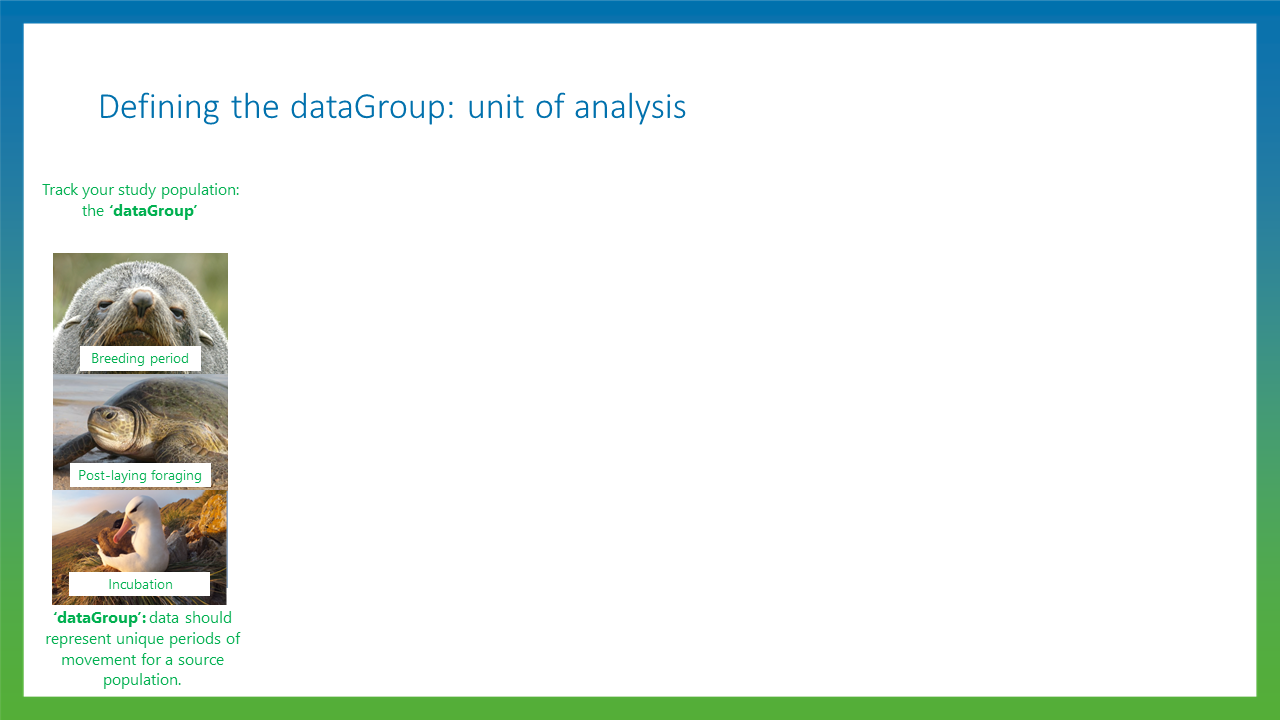
To consider this explanation of the dataGroup a little further, let’s take the example of these black-browed albatrosses breeding on the archipelago of the Falklands Islands in the South West Atlantic Ocean.
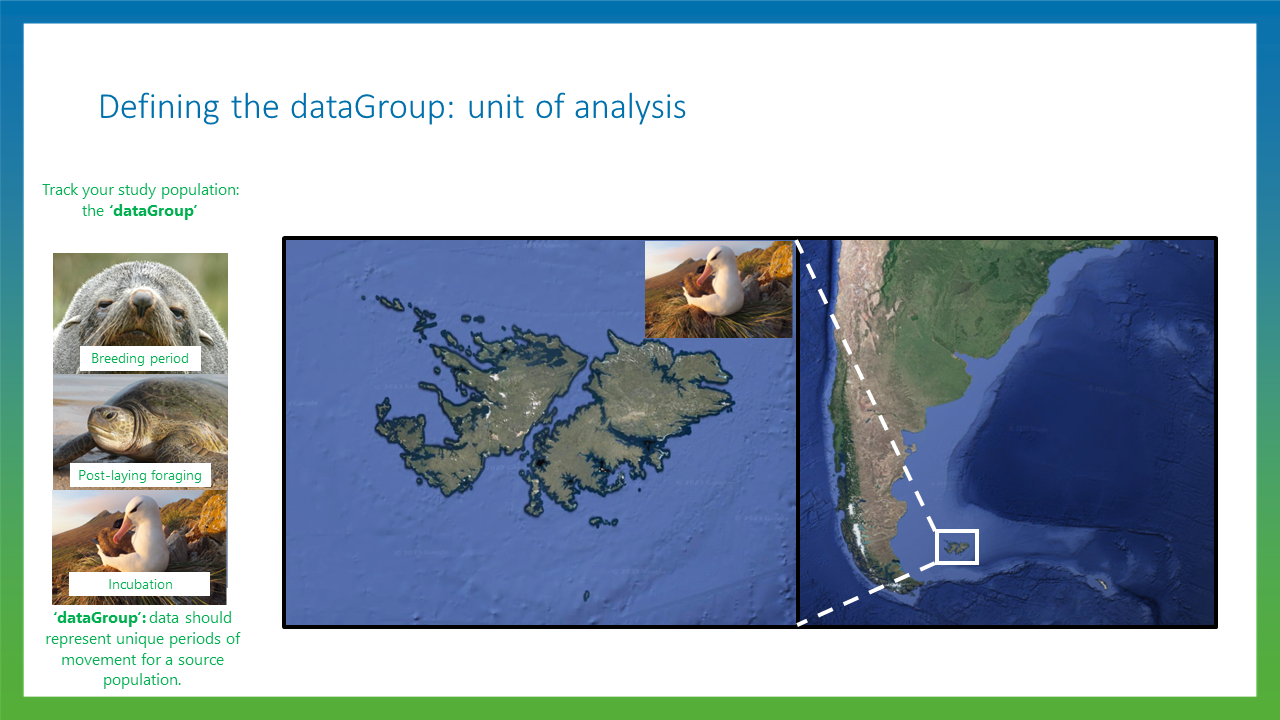
We know these birds breed at multiple locations across the archipelago.
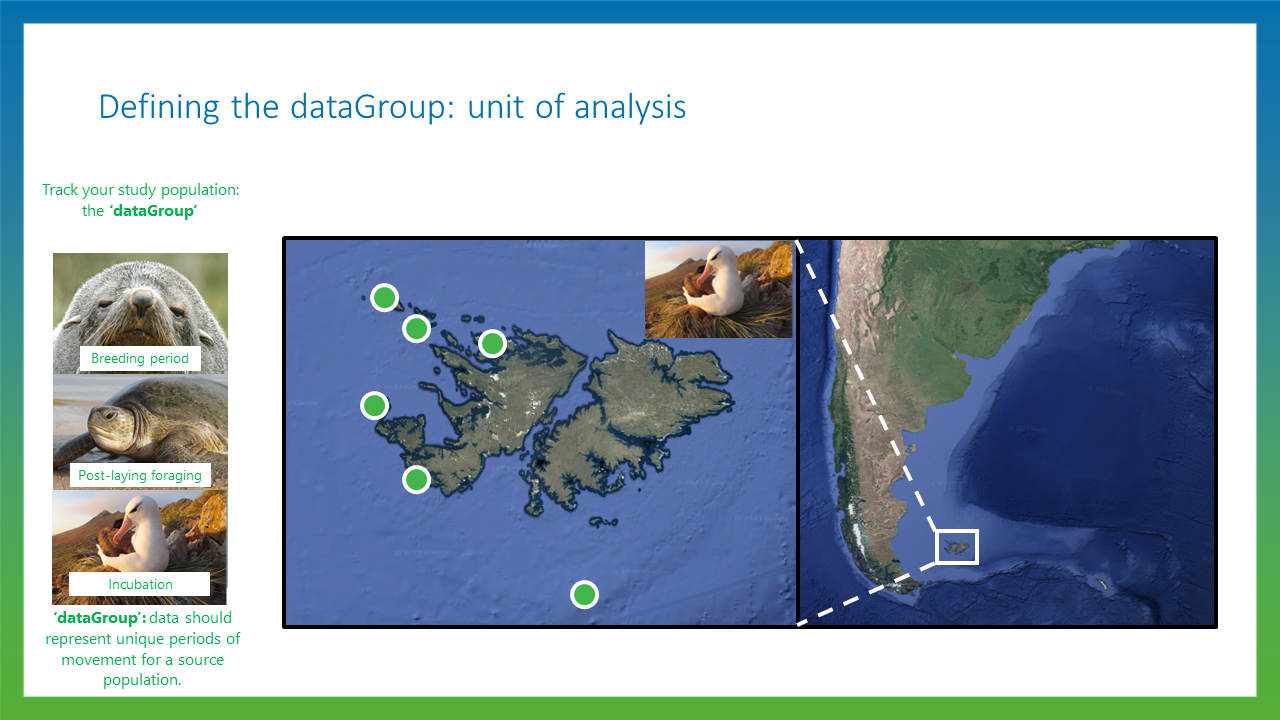
We also know that these birds have different movements patterns at different times of year.
Here we can see some simple illustrations of where birds move depending on whether they are
Chick rearing (CR)
Incubating eggs (I)
Or dispersing in the non-breeding season (NB)
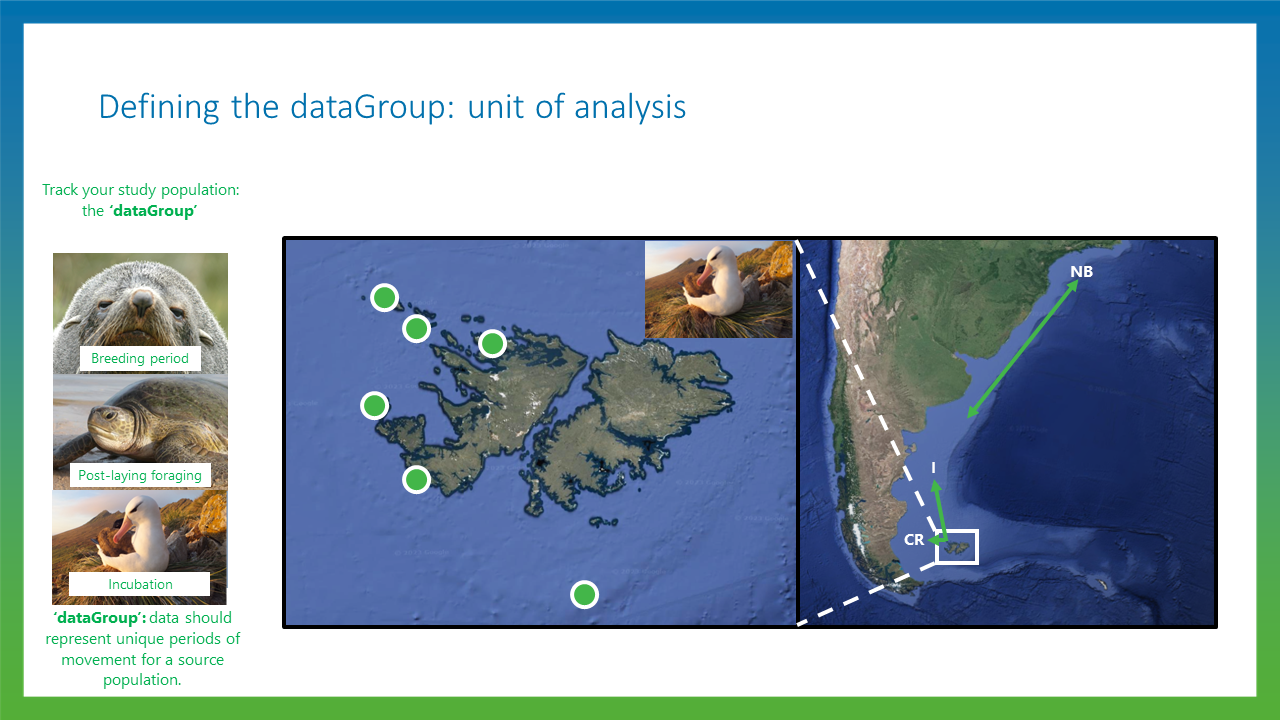
To define a dataGroup in this instance, the focus of the analysis happens at the level of:
A specific species
From a specific breeding location
During a specific life-cycle stage of the species, or unique movement period, such as when the birds are incubating eggs.
So, for analysing tracking data with the track2kba R package (See tracking section of toolkit), the animal tracking data from this population is the data that would be considered initially for use with track2kba in order to identify a site for assessment.
